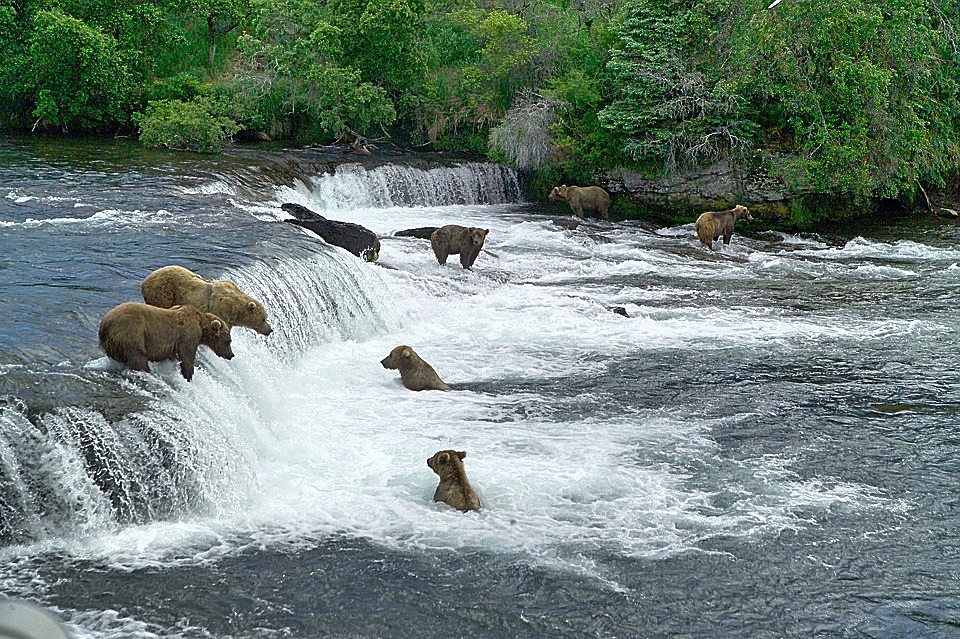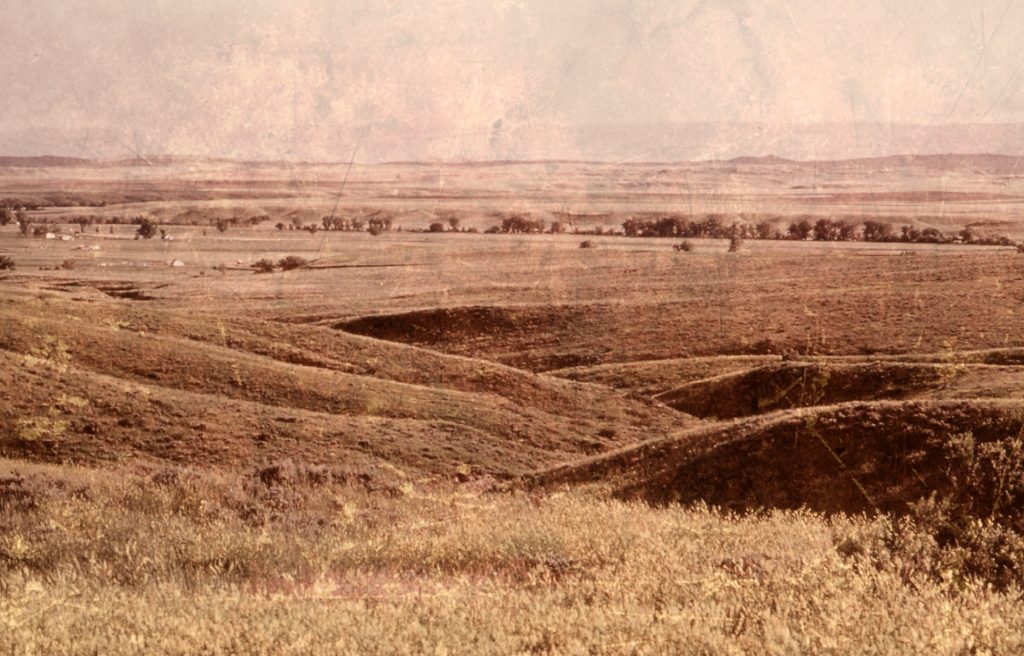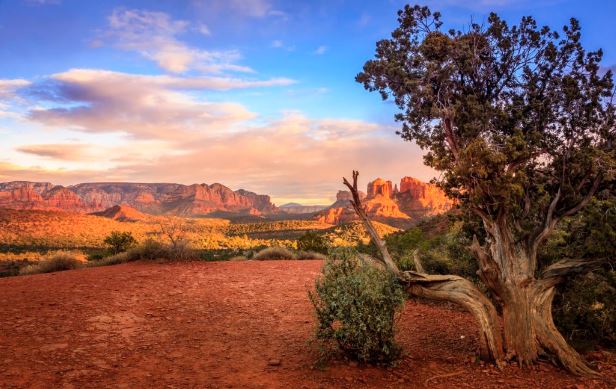The State of Alaska is among several parties with lawsuits pending challenging U.S. Fish and Wildlife Service and National Park Service efforts to override Alaska’s authority to manage state-trust fish and wildlife species. All other 49 states support Alaska and agree that wildlife management is most appropriately overseen with local expertise by state government.
Information taken from the Alaska Department of Fish and Game website
Obama’s Antiquities Act designations resulted in millions of acres of multiple-use lands being taken out of production and placed into restrictive enclaves. President Trump’s efforts to address the 27 national monuments either created or expanded since 1996 via presidential use of the Antiquities Act has eclipsed other recent cases federal overreach. National monuments are just part of the story. The National Parks Service (NPS), U.S. Fish & Wildlife (FWS), Bureau of Land Management (BLM) and U.S. Forest Service (USFS), which are tasked with managing various federal lands and the resources and wildlife they hold, have grown more aggressive, extending jurisdictional powers over state lands where there is no legal authority to do so. Alaska is among several states now suing the federal government (NPS, FWS) to halt redundant and intrusive wildlife rules issued late in Obama’s term.
As a basis for its lawsuit against the federal government, the Alaska Department of Fish and Game (ADFG) compiled a list of cases (below) in which national agencies devised and/or implemented policies extending outside of their jurisdiction, or did so without input or consent from state and local stakeholders. ~FRR Editor
Facts Regarding Recent Changes to State Wildlife Management in Alaska’s National Parks and Refuges
The State of Alaska is among several parties with lawsuits pending challenging U.S. Fish and Wildlife Service and National Park Service efforts to override Alaska’s authority to manage state-trust fish and wildlife species. While these are presently in-state issues, their implications if unresolved could set national precedent. All other 49 states support Alaska and agree that wildlife management is most appropriately overseen with local expertise by state government. Here’s some background:
•In October 2015, the National Park Service adopted rules for Alaska’s national preserves that superseded Alaska state hunting regulations and prohibited certain methods and means of hunting.
•In May 2016, the Kenai National Wildlife Refuge, under the U.S. Fish and Wildlife Service, adopted rules similar to those put in place by the National Park Service a year earlier.
•In August 2016, the U.S. Fish and Wildlife Service adopted its own rules that overrode state wildlife management authority on Alaska’s 16 wildlife refuges.
Earlier this year, the Alaska delegation was able to convince Congress to repeal the rules, except that adopted by the Kenai National Wildlife Refuge. President Trump signed the repeal on April 3.
In July, President Trump’s Interior Department instructed National Parks Service and Fish & Wildlife to reconsider rules which essentially rewrote Alaska’s state policies governing wildlife management. The rules issued late in Obama’s presidency (above) were named specifically for reconsideration because they contained, “various prohibitions that directly contradict State of Alaska hunting and trapping authorizations and wildlife management decisions.”
The repeal efforts were opposed by radical special interest groups, including the Center for Biological Diversity and the Humane Society of the U.S., which waged social media campaigns against the Alaska delegation’s repeal efforts. The groups used fear-mongering tactics and implied that Alaska state policies left the door open to horrific forms of animal abuse. The ADFG website explains: The repeal of the August 2016 U.S. Fish and Wildlife Service regulations through HJR69 was preceded by social media campaigns that used misinformation to cloud the issue. Contrary to what some activists claimed, the repeal does not allow hunters anywhere in Alaska to gas wolf pups in their dens or to shoot bears and wolves from airplanes, nor does it allow bears to be taken in steel-jawed traps. Similar campaigns are now targeting the July directive.
Statements correcting the misinformation spread by special interest groups are also available on the ADFG website, and help to support its lawsuit against the federal government for having issued intrusive and contrarian rules where there existed no scientific basis for doing so. The list of FAQ’s below sets the record straight and clarifies Alaska’s existing policy positions on important wildlife issues. (see below)
Question. What is the status of bear and wolf populations in Alaska?
Answer. The state manages wildlife, both predators and prey, on a sustained yield basis. There are no conservation concerns for bears and wolves in Alaska.
Question. Is the Alaska Department of Fish and Game poised to implement widespread predator control plans on refuges, parks, and preserves across Alaska?
Answer. No. Any predator control effort must comply with applicable state and federal laws. The department does conduct predator control in limited areas of state lands and only after significant study and input from the public through open processes.
Question. Aren’t some state-allowed hunting practices forms of predator control?
Answer. No, nor do they function in that manner. State hunting regulations have only a modest effect on the relationship between predators and prey and are generally designed to take advantage of abundant populations of wildlife under the sustained yield concept of wildlife management. This is especially important for subsistence users who depend on wildlife as their primary source of food and for others also seeking to carry on personal traditions related to harvesting fish and wildlife as food.
Question. Does the State of Alaska permit the aerial hunting of bears (brown/grizzly or black)?
Answer. No. Hunting from aircraft is prohibited for all species. Bears may be taken from the air in state-approved predator control programs only, and only by state staff. Such programs are not hunting, but are management actions for specific areas and purposes. These management actions have occurred in only two places: in a small portion of Game Management Unit 19A in the springs of 2013 and 2014 to benefit moose; and individual bears were targeted in Game Management Unit 26B in the springs of 2012, 2013, and 2015 to benefit muskox. For more information, look for the annual reports for Game Management Units 19A and 26B on the state’s website.
(Follow-up) Question. Is predator control for bears being conducted on any federal refuge or preserve lands in Alaska?
Answer. No, the state is not conducting predator control programs for bears on any federal refuge or preserve lands.
(Follow-up) Question. Under state management (prior to the federal rules restricting hunting practices), was predator control for bears taking place on federal refuge or preserve lands?
Answer. No, prior to the federal rules the state was not conducting any predator control for bears on federal refuges and preserves.
Question. Does the State of Alaska permit the aerial hunting of wolves?
Answer. No. Aerial hunting or shooting of wolves from planes or helicopters is prohibited under general hunting regulations. Agents of the state in approved intensive management programs areas may conduct predator control that includes taking of wolves from aircraft in limited areas. Such programs are not hunting, but are management actions for specific areas. For more information on each program, see the annual reports on the state’s website.
(Follow-up) Question. Under state management (prior to the federal rules), was aerial hunting of wolves taking place on federal refuge or preserve lands?
Answer. No, hunting from aircraft is not allowed in Alaska. In addition, the state was not conducting any predator control on federal refuge or preserve lands, but the USFWS did conduct predator control (fox and mink) on refuges and USDA Forest Service lands and continues to do so.
(Follow-up) Question. What are the general hunting regulations/restrictions for the use of aircraft in the taking of bears and wolves?
Answer. Hunting is prohibited until 3 a.m. the day after flying except for dispatching a wolf in a trap, or under the conditions of a permit for hunting bears at registered bait stations providing the hunter is 300 feet from the plane.
Question. Does the State of Alaska permit the gassing of wolf pups?
Answer. No. The use of carbon monoxide is allowed only in approved intensive management programs and only by state staff, not the general public. In a single incident in 2009, after taking two adult wolves in an approved predator control program, biologists discovered pups in a den. Because the pups were in an area endemic for rabies, the pups could not be removed from the area. Carbon monoxide was used to fill the wolf den and humanely kill the pups.
(Follow-up) Question. Under state management (prior to the federal rules), was gassing wolf pups in dens taking place on federal refuge lands?
Answer. No.
Question. What predator control programs are currently taking place on federal land?
Answer. The USFWS is currently conducting predator control for native red fox, Arctic fox, and mink on refuges and USDA Forest Service lands in Alaska. There are no state-run predator control programs on NPS or USFWS lands. Some BLM and military lands may be affected.
Question. Does the State of Alaska permit the taking of bears and/or bear cubs at den sites?
Answer. In general, no. State hunting regulations prohibit disturbing dens. However, taking bears and/or bear cubs at den sites is allowed in a limited area where it is a customary and traditional practice, and is limited to subsistence only. The Federal Subsistence Board also currently allows federally-qualified subsistence users to engage in this practice on designated areas within Gates of the Arctic National Park and Preserve.
(Follow-up) Question. Under state management (prior to the federal rules), was this practice taking place on federal refuge and preserve lands?
Answer. Yes. The harvest of bears at den sites is also allowed in some federal areas under federal subsistence regulations.
Question. Does the State of Alaska allow the taking of wolves and or wolf pups at den sites?
Answer. Dens can’t be disturbed when trapping wolves. Hunting of wolves can take place near dens if seasons are open.
Question. Does the State of Alaska allow the taking of bears over bait?
Answer. Yes. The harvest of bears at registered bait stations is a form of regulated take throughout many areas of the state (and throughout many of the contiguous 48 states). State hunting regulations require a permit, issued under 5 AAC 92.044. The Federal Subsistence Board also currently allows federally qualified subsistence users to engage in this practice on federal land.
(Follow-up) Question. Under state management (prior to the federal rules), was this practice taking place on federal refuge and preserve lands?
Answer. Yes, this was a recognized, compatible use by permit on federal refuges and preserve lands under a state permit.
Question. Does the State of Alaska permit the hunting of cub bears and sows with cubs? If so, in which cases?
Answer. Generally, no. However, taking of black bear cubs and sows with cubs is allowed in a limited area of the state at den sites and elsewhere, under customary and traditional practices by resident hunters. Few bears are harvested under this allowance in any given year.
(Follow-up) Question. Under state regulations (prior to the federal rules), was this practice taking place on federal refuge and preserve lands?
Answer. Yes.
Question. Does the State of Alaska permit the trapping or snaring of bears? If so, in which cases?
Answer. No, this is prohibited by the state’s hunting regulations. Bears may be snared only under approved predator control programs, and only by foot snares. The use of leg hold, steel jawed traps is prohibited.
(Follow-up) Question. Under state management (prior to the federal rules), was this practice taking place on federal refuge or preserve lands?
Answer. No. The state has not conducted predator control on refuges or preserves.
Question. Does the State of Alaska permit the trapping or snaring of wolves? If so, in which cases?
Answer. Yes, it is allowed under trapping regulations in a manner similar to other states with sustainable wolf populations.
(Follow-up) Question. Under state management (prior to the federal rules), was this practice taking place on federal refuge and preserve lands?
Answer. Yes, this use is conducted throughout Alaska, including on refuge and preserve lands where trapping is an allowed use.
Question. Does the state Board of Game have the authority to set all hunting rules in refuges and preserves, including seasons and bag limits for bears, wolves and coyotes?
Answer. Except when preempted by an act of Congress, all states have the authority to regulate the use of resident fish and wildlife. In Alaska, the Board of Game has the authority to set hunting and trapping regulations based on principles of sustained yield derived from the Alaska Constitution and as guaranteed by Congress in the Alaska Statehood Act, and the Alaska National Interest Lands Conservation Act. This includes the authority to establish or prohibit methods and means of harvest.
Question. Will the state Board of Game authorize predator control in refuges or preserves?
Answer. Though such action is theoretically possible, existing federal law already places significant barriers to implementing state predator control programs on refuges and preserves. The State of Alaska would work cooperatively with the federal agencies and in compliance with applicable federal laws if a state predator control program is desired on federal refuges or preserves. Whether such a program proceeds on those lands would be up to federal officials because such actions are subject to NEPA (National Environmental Policy Act) review. The USFWS does currently conduct extensive predator control programs in refuges across the United States, including in Alaska. These USFWS predator control programs are intended to improve populations of wildlife, particularly waterfowl, to meet population objectives to support human interests and to support the purposes of refuges, including hunting. In 2015 federal land management agencies, including USFWS, killed 385 wolves, 68,905 coyotes and 480 bears nationwide, along with thousands of other birds and mammals.
[paypal_donation_button]
Free Range Report
[wp_ad_camp_3]
[wp_ad_camp_2]



